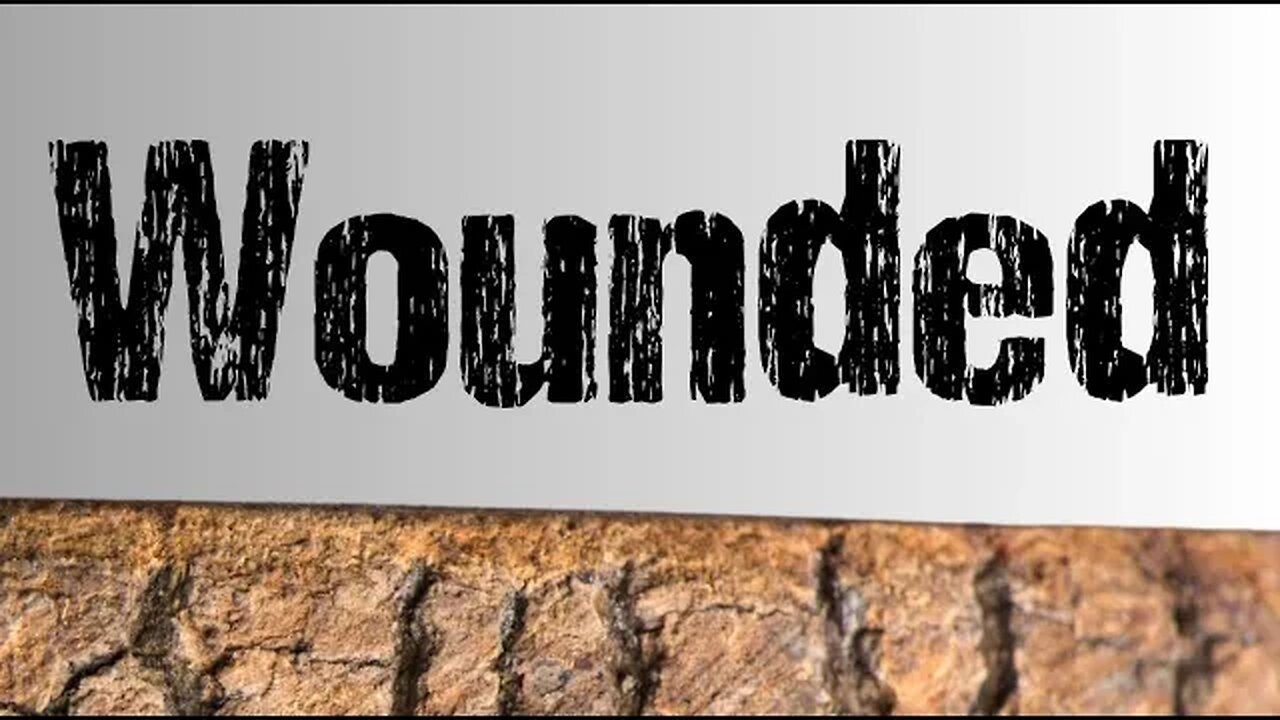Premium Only Content

Wounded - A Communion Message
Consider the wounds of Christ. Isaiah 53:5, "...he was wounded for our transgressions, he was bruised for our iniquities... "
Consider His profound suffering for our salvation. We will discuss these wounds using medical terminology.
1. The contused wound (a contusion) is a wound produced by a blunt object. A bruise caused by blunt trauma. Such a wound comes from being struck with a rod, as foretold in Micah 5:1.
Contused wounds were inflicted on Him as He was mercilessly beaten before the cross (Matthew 27:29-30, John 18:22). Isaiah 53:5, "He was bruised for our iniquities." "Bruised" signifies the deep contusions and internal damage caused by the cruel scourging, emphasising the physical trauma Jesus endured.
2. The lacerated wound (a laceration) is produced by a tearing instrument. A tear in the skin or other tissue. Christ received such a wound from the scourging. The Roman scourge was a many-tailed lash, each thong tipped with metal or ivory, so that, in the hands of a cruel expert, the sufferer might truthfully say, “The ploughers ploughed upon my back. They made long their furrows” (Psalm 129: 3). The prophet cried - 750 years earlier - Isaiah 50:6, : “I gave My back to the smiters.” John 19:1, “Then Pilate therefore took Jesus and scourged Him.”
If Jesus received 39 stripes in Pilate's Judgment Hall, that would have inflicted a total of 351 gashes on His lacerated back. If He received more than 39 stripes, the gashes would have been more. Eusebius records how many bled to death from scourging before being crucified. Not only was the back of the person scourged cut open in all directions, but even the eyes were torn out, the face and breast were torn open and often teeth knocked out. I quote, "All around were horrified to see them torn with the scourges that their very own veins were laid bare, and the inner muscles and sinews, and even their very bowels, were exposed."
3. The abrased wound (abrasion) is caused by some object rubbing or scraping against the skin.
A scrape or scratch on the skin. Christ would have suffered this type of wound when He was forced to carry the cross upon His back. John 19:16-17. As Jesus was forced to carry His cross, we can imagine the abrasions and cuts caused by the rough timber digging into His already weakened and wounded body.
4. The penetrating wound is a deep wound caused by a sharp-pointed instrument. A wound that goes through the skin and into the underlying tissues. This happened to Jesus when they placed upon His head a crown of thorns, Matthew 27:29 and John 19:2. These wounds were deepened when they smote Him "on the head" with the reed, Matthew 27:30. This was done repeatedly. The Jerusalem thorn, from which that “victor’s crown” was platted, bore over 100 spikes, four inches long - sharp as a needle - which the soldiers pressed down upon His head. This caused numerous lacerations, both superficial and deep, penetrating the scalp and causing immense pain. Thorns speak of the original curse: "Cursed is the ground for thy sake..." "Thorns also and thistles shall it bring forth unto thee..." (Genesis 3:17-18). Christ took the curse for us.
5. The perforating wound is one that pierces through the body at some point. A wound that goes through an organ or other body cavity. When Christ was crucified, they drove metal spikes through Him. This was prophesied in Psalm 22:16. Crucifixion was not practised as a means of capital punishment by the Jews, so the words must have puzzled even the writer of the Psalm. The prophetic question in Zechariah 13:6: “What are these wounds in Thine hands?” was ever before the Lord.
6. The Incised wound (incision) is a cut produced by a sharp-edged instrument. Our Lord suffered significant loss of blood. At the end his body received an incision wound when the Roman soldier thrust his spear into Christ's side to ensure that He was dead, John 19:34. There came forth "blood and water". This attests to the physical trauma endured by Jesus, as it punctured His thoracic cavity, resulting in the release of blood and a fluid called serous fluid from the pericardial sac. The pericardium is a closed sac encasing the heart and is lubricated by a small amount of fluid to facilitate the motion of the heart. Medical sources state: "The normal amount (of the pericardial fluid) is about a teaspoonful, but may increase to 100cc (24 teaspoonfuls) where the death agony is prolonged."
The Lord bore wounds by mutilation. The plucking of His beard. Isaiah 50:6, I gave my back to the smiters, and my cheeks to them that plucked off the hair: I hid not my face from shame and spitting.
By "His Sore", his hurt, we are healed! He was "one sore" from head to toe. He suffered for us - to purchase our salvation. We have what our Lord went through to redeem us. His wounds show His sacrificial love for us. Our Lord bore the weight of our sins. He suffered so that we could be forgiven and have eternal life. The great price of our redemption.
-
 1:22:39
1:22:39
Badlands Media
1 day agoAltered State S.3, Ep. 26
62.3K13 -
 5:42:28
5:42:28
JdaDelete
9 hours ago $3.93 earnedBanjo-Kazooie - wedNESday
47.7K5 -
 30:09
30:09
Iggy Azalea
11 hours ago $6.28 earnedplaying motherland
65.9K22 -
 LIVE
LIVE
SpartakusLIVE
8 hours agoDuos w/ Rallied || A Spartan and a Dragon ENTERTAIN the MASSES
534 watching -
 20:09
20:09
Exploring With Nug
16 hours ago $2.62 earnedVanished After Driving Away… I Spent the Day Searching Lakes
59.4K5 -
 1:14:13
1:14:13
Glenn Greenwald
8 hours agoLee Fang and Leighton Woodhouse Look Back on Trump’s First 100 Days; Lara Friedman on New Laws Barring Israel Criticism | SYSTEM UPDATE #446
121K64 -
 9:01:19
9:01:19
ZWOGs
14 hours ago🔴LIVE IN 1440p! - DEATH STRANDING 1 - PLAYTHROUGH | DAY 4 | - Come Hang Out!
32.8K6 -
 1:45:28
1:45:28
Joker Effect
6 hours agoWhy aren't you trying to enjoy yourself? Live a little! go.mother.land/Joker
27.1K1 -
 2:06:37
2:06:37
Geeks + Gamers
6 hours agoMARIO KART WARS
20.7K -
 1:14:12
1:14:12
Right Side Broadcasting Network
5 days agoLIVE: Exclusive White House Special: President Trump's First 100 Days - 4/30/25
76.2K19